Tale of Two 2,000-mile EV Rural Road Trips
A Two-Country Kia EV6 Experience
Last year I set out to see what it would be like to take a couple of long road trips in a Kia EV6–one in the UK and the other in the U.S. My desire was to learn how to live with an EV away from one’s familiar territory and also to find out what one has to do to overcome charging station issues and learn how to live with it.
Range anxiety has been the bugaboo of EVs. Fortunately it’s becoming less of an issue now the newest EVs have a range of up to 300 miles on a full battery charge.
Nowadays the biggest concern is finding a charging station when needed. Since sales of EVs are growing at a faster rate than expected, this is a major concern that needs be taken care of pretty rapidly.
Of course, most owners of EVs use their vehicles in a local environment and, those that can, charge their vehicle’s battery overnight at home or during the day at work. Consequently, range anxiety and charging locations are of little concern.
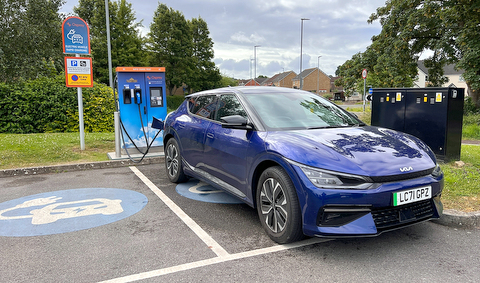
Around the UK
In the UK my goal was to drive from Heathrow on a mammoth loop around the very northern parts of the Scottish Highlands on the NC 500 route, which traverses one of the most remote and sparsely populated parts of Europe.
I took delivery of an EV6 that Kia UK kindly loaned me. It was showing a charged capacity of 60%, which was more than enough to take a 90-mile jaunt to a relative’s house for the first night. I duly plugged it into an exterior household outlet. Since it was not a Level 2 charger, I knew it would not gain much juice overnight. I was right, it only boosted the battery level from 31% to 51%. That meant looking for a decent public DC charging station in a nearby town.
I found one at local supermarket but out of the four stands only one was a high speed charger compatible with the CCS plug on the EV6. However, it was occupied and the vehicle was already 90% charged, so I waited–and waited. It was almost an hour before the inconsiderate owner returned to retrieve his fully charged car, but at least he was apologetic.
Lessons Learned
I then learnt a new lesson. I had to sign up online to create an account to use the charger or make a phone call to use a credit card, which is what I did. It took an hour to get up to 80% charge, but that gave me a sufficient range to head north to my first destination goal.

The next problem was when I tried to download apps as my iPhone, despite having a one-month local SIM card, would not allow me to download the official Kia app or apps for charging networks. It said my account was not valid in the UK. I resolved the issue by switching my Apple account to a UK address. Since I’m a dual citizen with a UK address, it was not a problem, just an unnecessary hassle. I’m not sure how a visitor wanting to rent an EV would handle this issue. I don’t understand why all chargers won’t accept credit cards just as they do at gas stations.
From then on, the situation got better as I learnt how to manage charging in unfamiliar areas. Scotland has a very large number of charging stations under the Charge Scotland brand. Sadly, many of the chargers proved to be only capable of delivering up to 50 kW, whereas the Kia can be charged at 200 kW or faster.
New Friends and New Adventures
Like so many EV owners have discovered, we did come across some non-functioning ones. At one station on the Isle of Skye the card reader was faulty and I was unable to use it. Fortunately the guy next to me was finishing charging his Mustang Mach-E and he “gave” me his cable to use (the cost was being charged to his company card). He was a Swede and had driven all the way from Sweden without any charging issues.
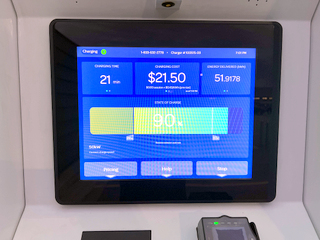
Ironically, the bigger problem in the Scottish Highlands was finding hotels, not EV charging stations. It was no wonder there were so many RV camper vans everywhere.
As my 10-day trip went on I learned how to live with charging that could take anywhere from 20 to 80 minutes. Thanks to phone apps, I was able to find chargers at several pubs and a few hotels as well getting quick charges at several major gas stations.
Once I even took an evening walk for exercise around a town while the Kia was charging at a closed supermarket.
On the last day I knew I would have to get a full charge to make it back to Heathrow and leave it with enough juice for the driver who would collect it. I calculated it’d take me an hour to pack my suitcase and get everything organized so, instead of doing it in my hotel room, I did it in the car while it was being charged. The Kia was fully charged before I was ready to continue!
Around the Upper Midwest
A few months after my UK jaunt, Kia USA loaned me an EV6 AWD so I could undertake a similar trip in the U.S. Since I was attending the Detroit Auto Show, I could replicate my UK trip for comparison. My goal was to head north to Michigan’s Upper Peninsula, then west to Fargo, ND, and back to Detroit via Iowa. Sadly, once I checked the Plugshare app, I realized there were no high speed chargers and only a handful of slow chargers between Gaylord, MI, and Fargo. Since I couldn’t afford the time to endure slow charging, I had to skip that part of my planned road trip. Instead, I drove to Cleveland and then back westward to the center of Iowa, where I visited a relative.

Since I was back to the U.S., I had to change my Apple account so I was able to download several apps that showed me where to find charging stations. I found them to be more useful than the one incorporated in the Kia’s nav system.
I drove on some freeways and tollways as well as two-lane country roads. As expected, I found many charging stations tended to be a few miles from exits and quickly learned that the Electrify America ones were by far the fastest as they offer DC charging up to 350 kW. The actual rate did change from one place to another. The highest I experienced was 218 kW. Yes, there were some stations not functioning, but I only had to wait for an open spot at a station once in two weeks.
Learning to Maximize Your Time
By now I was experienced at maximizing the use of my time. On a few occasions I had not finished eating a meal, checking emails or making phone calls before the EV6 was fully charged.
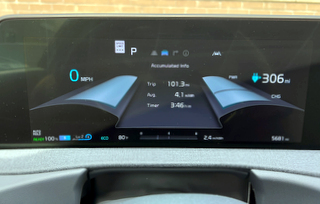
Since I undertook my trips, the charging infrastructure issue appears to being tackled head on. In just the past couple of months I’ve seen a bank of Electrify America chargers installed in my local bank parking lot. It was encouraging to see three of the four bays being utilized one Saturday morning and, just a mile away, a recently expanded bay of Tesla chargers had 14 Teslas being charged at 16 bays. A local Walmart also had a brand new installation of Electrify America chargers and one of them was occupied by a brand new Kia EV6 GT–the 30+ year old guy said he absolutely loved it.
Yes, I admit I’ve been a fan of EVs since 1955 (not a typo). Based on my two recent experiences, I’m convinced they will takeover the market in the coming decades. I just hope restaurants, shopping malls (if they still exist), hotels and areas where people spend time will see the real value in installing high speed DC charging stations at their locations.
In summary. I learnt that as long as you’re not in a rush to cover more than 300 miles, driving an EV can prove to can be a productive and relaxing way to travel, especially if you have an electric car that can be charged at over 200 kWh along with a range of around 300 miles on a full charge.
Thoughts on the Kia EV6
Between them, the Kia EV6 and its twin, the Hyundai Ioniq 5, have captured many awards. I’m not surprised as they are two of the most advanced EVs on the market, thanks mainly to their 800-volt architecture, which offers a higher capacity battery and faster charging.
Currently the only other cars with an 800-volt systems are the Porsche Taycan and Audi E-Tron GT. Most EVs use 400-volt systems, which require thicker cables and produce more heat while charging and running. It’s no surprise that 800-volt systems will be used in many if not all new EVs coming to market in the next couple of years.
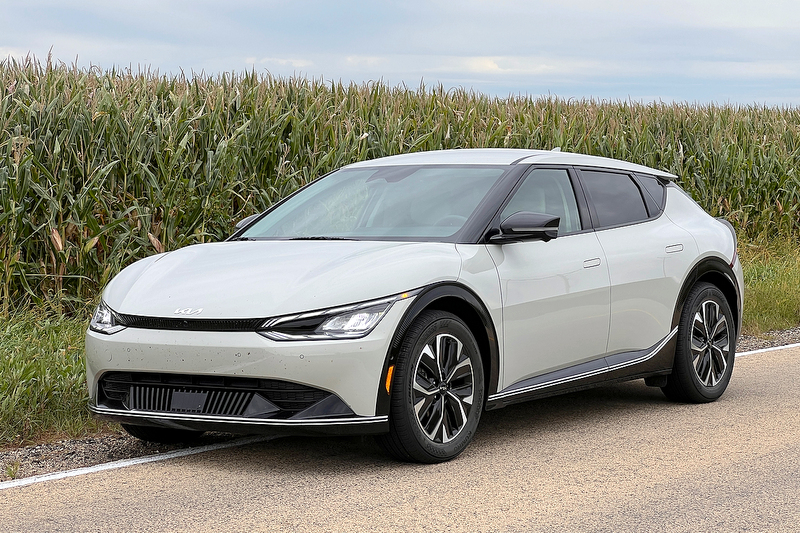
Even using the economy mode setting, I found the EV6’s performance to be exhilarating. The instant torque provides great acceleration at all speeds. On two-lane roads, it makes passing so much safer as you can instantly “gas” your way past slower traffic.
Thanks largely to the low slung battery pack, which gives the car a lower center of gravity, the handling is also more akin to a sports car than an SUV. Car enthusiasts may lament the lack of engine noise, but for most the quietness provides a more relaxing experience.
In the UK I found the EV6 was a little bigger than I’d like as the roads and parking bays are so small. Of course, this was not an issue in the USA where the EV6 proved to be the ideal sized car (oops)–I refuse to call it a crossover or utility vehicle and cannot figure out how it can honestly be described this way. To me, it’s the ideal hatchback or, dare I say, station wagon.
Fuel Costs
It proved pretty much impossible to get accurate “fuel” consumption information for both trips since several charges were done at privately owned charging points with no cost displayed. In the UK the EV6 averaged 3.8 miles/kWh and costs were anywhere from zero to 60 cents per kWh. The same situation occurred in the U.S., especially, as luck would have it, Electrify America was running a promotion during part of the trip and not charging any customers! Overall, the consumption averaged 3.5 kW/mile according to the display on the EV6.
A Six-Year-Old Learns about EVs.
John Rettie has been a fan of EVs since 1955 when he was a little boy growing up in the UK. Every now and again his parents allowed him to take a ride with the milkman on his horse-drawn milk float. In 1955, the local dairy switched from horses to electric milk floats. Even at that young age, John was impressed. it was a practical and financially sensible move since milk floats only covered a few miles of stop and go driving each day, and then they sat idle overnight while being recharged.

In 1984, when John had become an automotive journalist, he had the opportunity to drive a VW Golf in the UK that had been converted to an electric powertrain. He was impressed by the car’s performance and smoothness. At that time the only car that came close was the Wankel-powered NSU Ro80.
The next EV he recalls driving was an electric car built in the early 1900s before gasoline cars took over the market. That was during a comparison arranged by Honda, showing off a prototype electric car in the late 1990s. Aside from the lack of decent braking, the performance of the old car surprised everyone.
In 2012, John was one of the very first journalists to take a brief drive in the Tesla Model S when it was launched. Within the first mile, he was blown away by the car’s performance and sophistication.
As a fan of the famous Pikes Peak hillclimb, he predicted years ago that an electric car would eventually break the record to climb the mountain. That prediction came true in 2018, when the Volkswagen IDR4 shattered the previous overall time.
Currently, John is disappointed in how many people, even some auto journalists, are so anti-EV. He finds himself having to remind many people that the most powerful railroad locomotives and mining trucks use electric motors as they are so much more efficient and powerful than a direct-drive diesel engine.
Based on history, he says it’s easy to see that, despite the naysayers, EVs will eventually take over the market. The rate at which they are being adopted in first world countries other than the U.S. is happening more rapidly than expected and is astounding pundits everywhere.
Story and photos by John Rettie

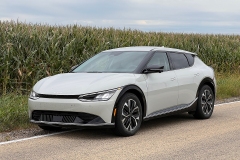
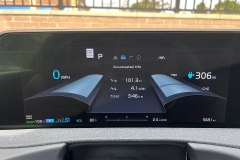
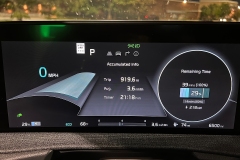

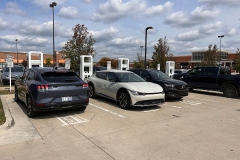


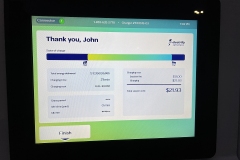
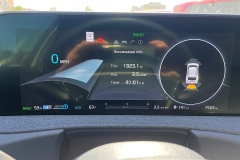
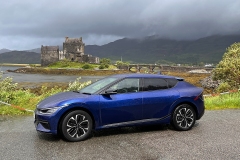
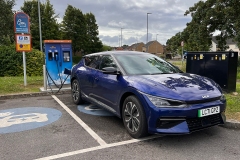

4 thoughts on “Tale of Two 2,000-mile EV Rural Road Trips”